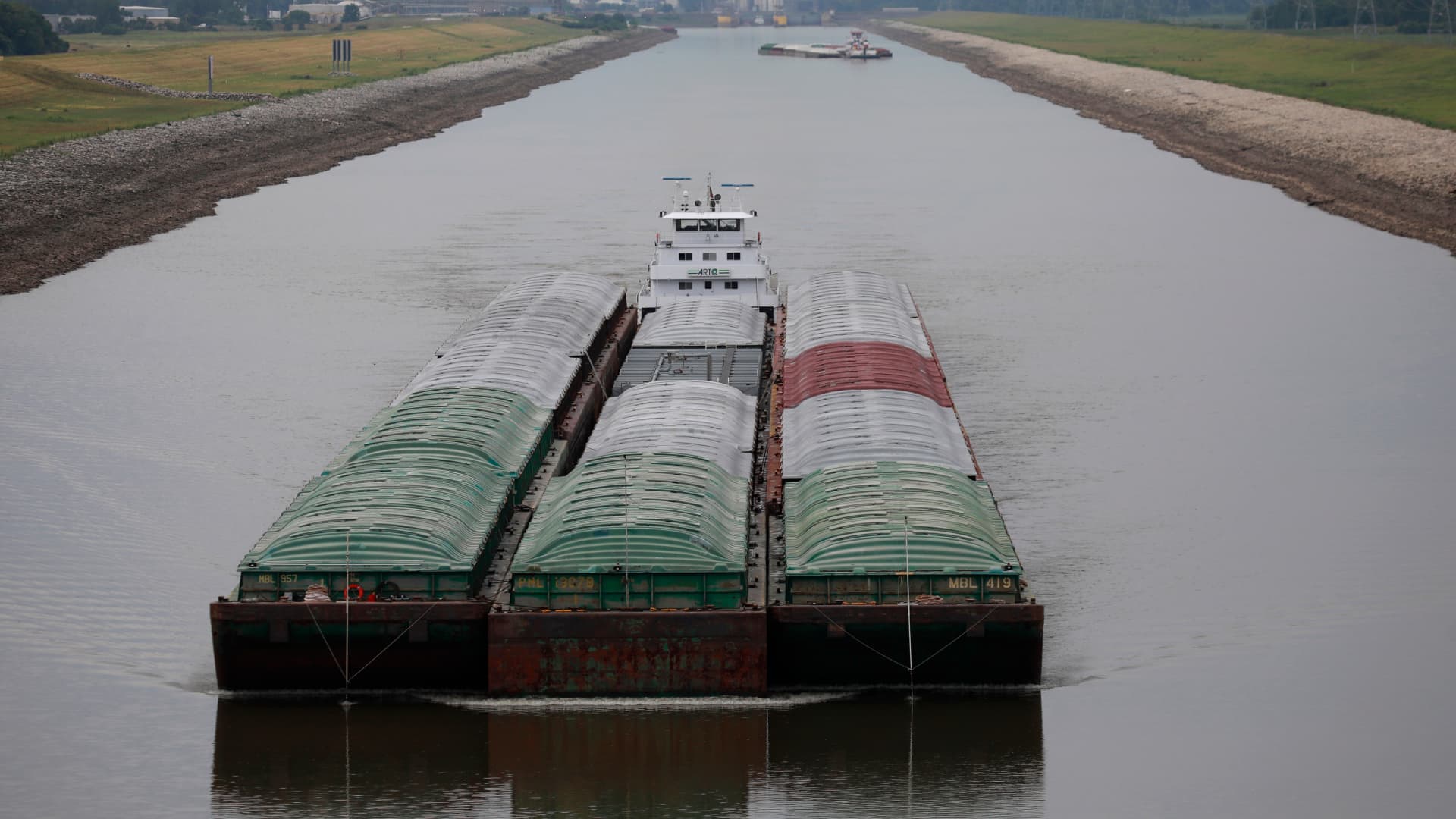According to the National Weather Service Memphis Office, the Mississippi River is projected to tie the all-time record of -10.70 feet, either later today or tonight. The Mississippi River is a vital waterway for trade and the lower water levels have impacted the amount of commodities that can be imported or exported out of New Orleans. Barges cannot be fully loaded. According to the U.S. Department of Agriculture’s weekly transportation report, southbound barge tonnages were reduced on the river by more than 20%
Agriculture shippers for corn, soybeans, and wheat use barges as a cheaper alternative to trucks or rail to move their grain in bulk. Just under half (47%) of all grain is moved by barge, according to the USDA. Approximately 5.4 million barrels of crude and 35% of thermal coal are moved on the Mississippi.
“While the public and media generally understand that our economy depends upon viable international ocean shipping, trucking, and rail transportation, the essential role of our inland waterways is often overlooked,” said Peter Friedmann, executive director of the Agriculture Transportation Coalition. “Our members depend upon adequate water levels in the Mississippi River system, to reach domestic and international export markets. The low water disruption of the supply chain will be felt not only by our U.S. producers of food, farm, and fiber but also by U.S. and international consumers as well.”
Retailers turn to trailers for storage
Retailers are moving both large and small items into 53-foot trailers as alternatives to warehouses, according to logistics experts.
“We are definitely hearing from our clients for the short-term they are storing larger, bulkier items like furniture in trailers attached to their warehouses,” said Brian Bourke, chief growth officer of Seko Logistics. “Although we are not storing regular inventory in 53-foot trailers or containers, we are using 53-footers to store some items like unsorted returns that are less critical, to focus the warehouse on the outbound shipping to customers.”
In addition to furniture and unwanted items, commodities are also heading into storage.
“Tires are another big inventory item in storage,” said Joe Monaghan, CEO and President, Worldwide Logistics Group. “We are also receiving orders for 53-foot containers to hold the product in pop-up yards for anywhere from one to six months.”
Paul Brashier, vice president of drayage and intermodal at ITS Logistics, tells CNBC retailers are trying to find creative ways to manage their excess inventory.
“Many of our client’s distribution centers (DCs) are overstocked and they are navigating how to deal with that excess inventory and move all the subsequent freight,” Brashier said. “With that headwind, those DCs that process their import freight are really feeling the pressure. We are identifying their high-demand SKUs and taking them out of their terminals to our pop-up transload facilities. We then load that product into a 53-foot container to move that inventory further inland so it can reach the consumer faster.”
East Coast port congestion
As more trade continues to move to the East Coast, congestion at the ports continues to build and the volume of containers heading to warehouses is pushing up prices, even as demand has declined. Savannah leads the East Coast in the number of vessels waiting at anchor. Pop-up yards holding containers off the port are one of the logistics strategies being used to move the boxes out of the port to speed up productivity.
The East Coast congestion has had a massive impact on vessel reliability.
“Global vessel schedule reliability may be improving but the Transpacific is stagnant,” said Alan Murphy, founder, and CEO of Sea-Intelligence ApS. “70% of vessels are not arriving on time on the Transpacific line which has been hit the worst.”
One of the factors which influences reliability is the number of vessels a port receives. Ports seeing fewer vessels including Charleston, Long Beach, Los Angeles, and New York are seeing improvements in vessel reliability, Murphy said. But for Savannah, which has dozens of vessels waiting at anchor, there are delays which impact vessel schedule reliability.
“The ports like Savannah are full,” said John McQuiston, managing director, global head of originations in the Wells Fargo trade and supply chain finance division. “You have vessels holding inventory while ports process containers. What took days now takes weeks because of the number of containers coming in.”
“One of my biggest worries right now with this congestion is a railroad strike knocking out the third leg of transport,” McQuiston said. “The U.S. would have an element of paralysis in certain sectors of the supply chain if there was a rail strike. You do not have enough cabs or drivers to pick up the containers once bound for rail.”
The CNBC Supply Chain Heat Map data providers are artificial intelligence and predictive analytics company Everstream Analytics; global freight booking platform Freightos, creator of the Freightos Baltic Dry Index; logistics provider OL USA; freight forwarding & logistics services provider Worldwide Logistics Group; supply chain intelligence platform FreightWaves; supply chain platform Blume Global; third-party logistics provider Orient Star Group; marine analytics firm MarineTraffic; maritime visibility data company Project44; maritime transport data company MDS Transmodal UK; ocean and air freight rate benchmarking and market analytics platform Xeneta; leading provider of research and analysis Sea-Intelligence ApS; Crane Worldwide Logistics; DHL Global Forwarding; freight logistics provider Seko Logistics; and Planet, provider of global, daily satellite imagery and geospatial solutions.
